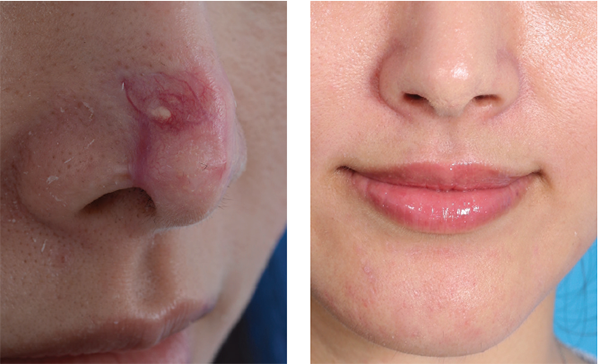J. Madison Clark, MD, associate professor of facial plastic and reconstructive surgery in the department of otolaryngology at the University of North Carolina in Chapel Hill, outlined five points to his approach to the aging face. “My number one goal is to be safe,” he said. He also strives for a natural result; to address facial movement, which he called the “fourth dimension”; to manage expectations properly; and to handle each case ethically.
Explore This Issue
June 2017“‘Cash,’ to me, is the most dangerous four-letter word,” he said. It can often be the primary driver in decision-making for a facial plastic surgeon or otolaryngologist, and he called it “a very dangerous slope to go down.” He said that his philosophy involves marketing that relies almost exclusively on word of mouth rather than advertising. He drew a distinction between education and selling: “We are selling what we do [not only] by producing good results, but also by educating the patient,” he added.
He encouraged the audience to “embrace your ENT foundation.” He said that some facial plastic surgeons attempt to distance themselves from this foundation. “I embrace my ENT training with pride with my patients, and feel strongly that this dual board certification is precisely what sets us apart from the other specialties that perform plastic surgery on the face,” he said.
He added that his more well-informed patients tell him that his combination of otolaryngology and facial plastic and reconstructive surgery training is why they sought him out for cosmetic surgery.
Filler Misuse
Stephen Park, MD, vice chair of otolaryngology-head and neck surgery in the facial plastic and reconstructive surgery division at the University of Virginia in Charlottesville, said that the temptations are great for some in the field to misuse fillers. The lures of cash “are real,” he said. “If you have some Restylane or other filler, it is just tempting and almost seductive to fix small depressions with a little injection in the office,” he said.

These images show a case handled by Stephen Park, MD, that involved a filler injection gone awry and his surgery to correct nose-tip irregularities.
© Courtesy of Stephen Park, MD
Most of the time, fillers work well and things go smoothly. But when things go wrong, they can have devastating consequences, he said. One patient, a 30-year-old woman, came to him after she underwent an injection procedure with another physician that would, she had hoped, give her a stronger profile. The first injection went poorly, leaving irregularities on the tip of her nose. Then, Dr. Park said, someone tried to fix this with yet another injection. The result was loss of skin, scarring, and further distortion. This deformity was then permanent—and emotionally devastating for the patient. That’s when she went to see Dr. Park. This kind of situation puts the patient and the surgeon in a difficult position, he said. The decision, he said, is sometimes to “go big or go home.”